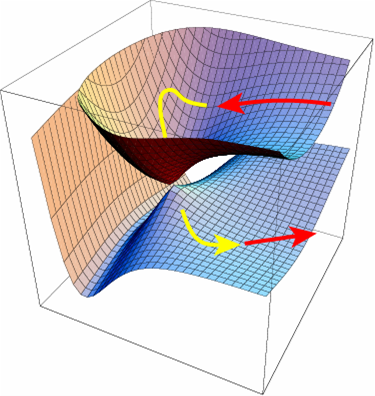Areas of Research and Expertise
My research concerns mostly the development and application of methods to determine and analyze quantum mechanics of chemical reactions. One of my recent interests related to the quantum phenomena is non-adiabatic transition which could occur in various fields, such as chemistry, physics, biology, and economy. “What is the non-adiabatic transition?” is as follows; if the system under consideration is described by two groups of variables and one (R) changes slowly compared to the other (r), then the state of the system can be well represented by the eigenstates of the motions with respective to the rapidly changing variables (r) obtained at each fixed value of the slowly changing variable (R). This is called “adaiabatic approximation” with respect to the parameter R, which defines a set of eigenfunctions and eigenenergies as a function of R. The set of the eigenenergies as a function of R is called “potential curves”. If this approximation works well – the adiabaticity holds well – the system stays on the same eigenstate. No transition occurs and the system is physically not interesting at all. Physically interesting phenomena occur when the adiabaticity breaks down. This happens when two (or more) adiabatic eigenstates come close together in a certain region of the adiabatic parameter R. This close encounter of potential curves is called “avoided crossing” or “pseudocrossing.” Non-adiabatic transitions induced by the motion with respect to R occur most effectively at these avoided crossings. By the non-adiadbatic transitions, we can obtain unique phenomena. On ther other hand, applications are made to a variety of molecular problems, especially the chemical reactions that play important roles not only in general chemistry but also in a boundary region between chemistry and nano-technology. I am also interested in high performance computing (HPC), because I believe that the HPC would provide us “break-through” on our new science. My actual research project is as follows;(i) Quantum wave packet dynamics – photo-dissociation process and reactive scattering,
(ii) Molecular switching – a new proposal of hydrogen encapsulation with an aggressive use of non-adiabatic phenomena,
(iii) Host-guest chemistry of crown ethers – complexation of the ether oxygen with various ionic species,
(iv) Rigorous theoretical calculation for ro-vibrational motions of tri-atomic systems – including Coriolis coulping and Renner-Teller coupling,
(v) Theoretical determination of global potential energy surfaces for molecular electronic states,
(vi) Theoretical analysis for oxidation mechanism of Si surfaces,
(vii) Theoretical determination of isotopic fractionation constants, and so on.
Note that several projects have been done with some foreign researchers. I hope I would have a new impact on our research field.

Conical intersection between two potential energy surfaces.